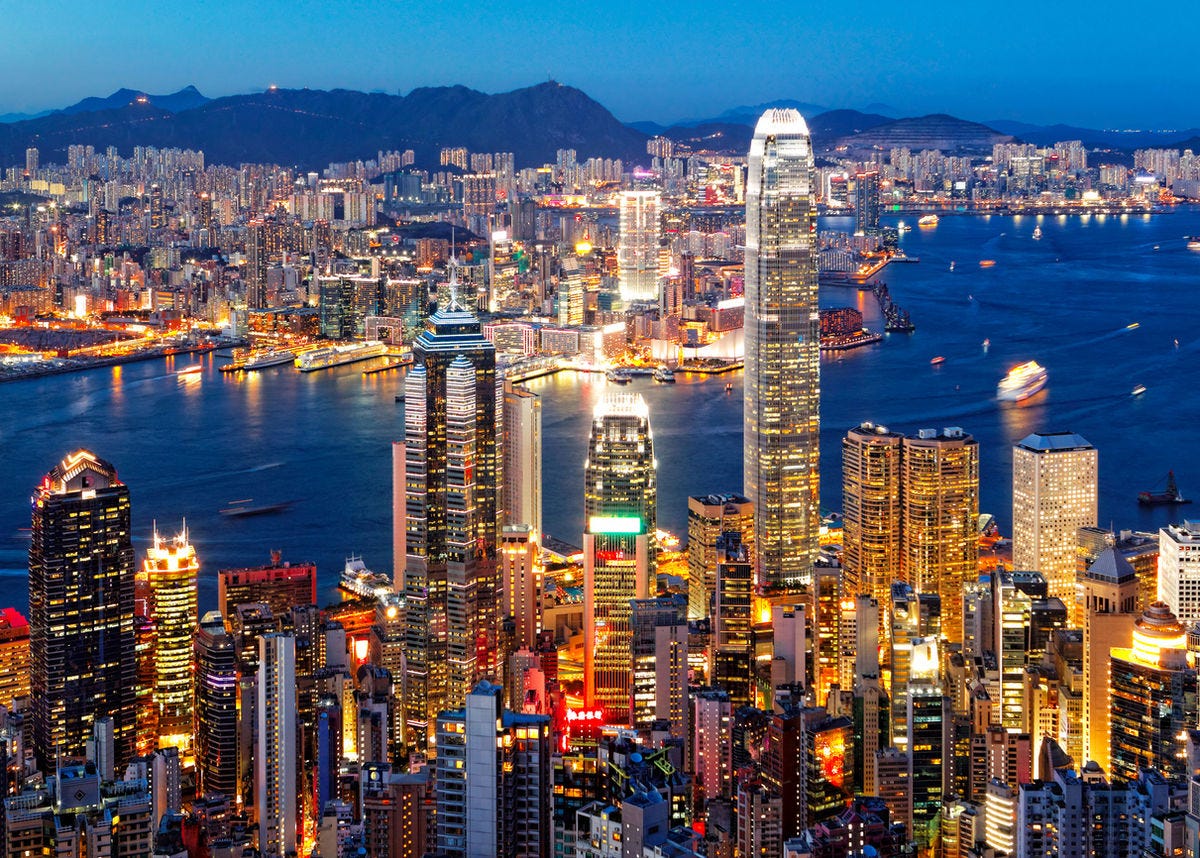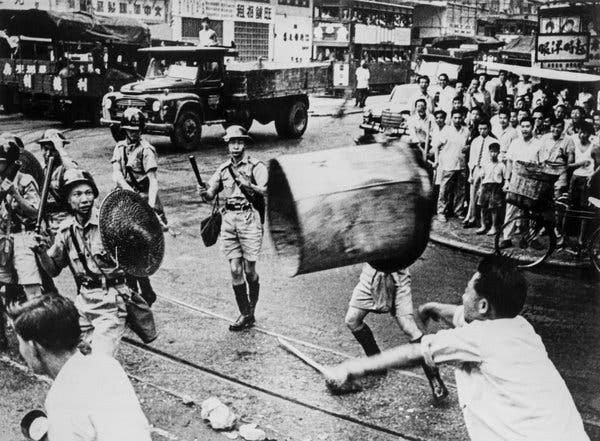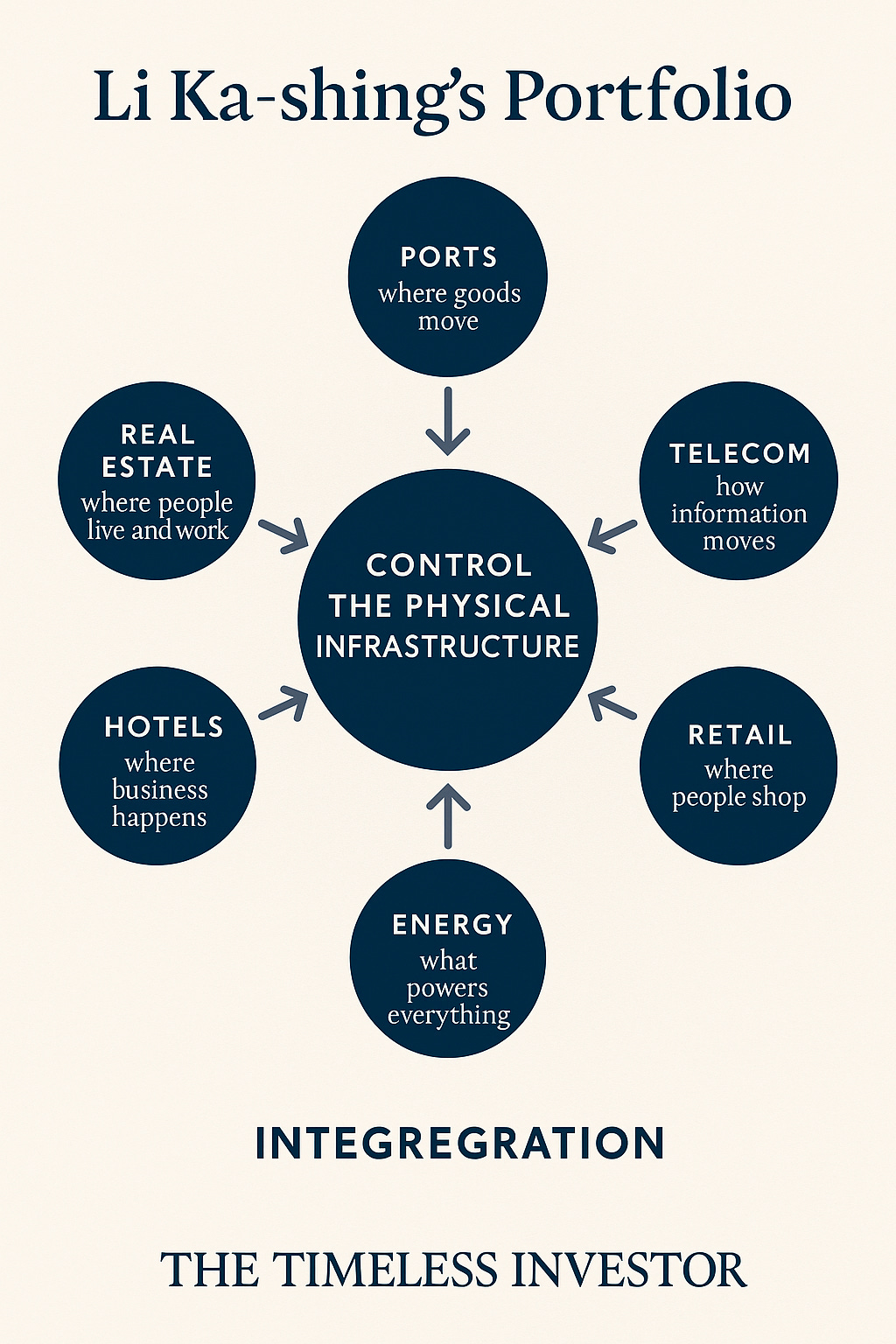The $40 Billion Man You've Never Heard Of
How a Hong Kong school dropout built the world's most patient real estate empire (while American investors chased quick flips)
In 1950, a 22-year-old factory worker in Hong Kong scraped together $7,000 to start a plastic flower company.
Sixty years later, he controlled more prime real estate than anyone on earth - ports from Panama to Pakistan, skyscrapers from London to Vancouver, entire city districts carved from nothing.
His name was Li Ka-shing.
And chances are, you've never heard of him. Well, some of you probably have. But most of you probably haven’t.
While American investors were chasing tech IPOs and engineering balance sheet magic, Li was quietly building the most disciplined, strategic, and methodical real estate empire in modern history.
This is his story.
The Education of a Refugee
Li Ka-shing's father died when he was 13.
His family had fled mainland China ahead of the Japanese invasion and arrived in Hong Kong with nothing. Li dropped out of school to support his mother and siblings, working 16-hour days in a plastics factory.
But here’s where Li’s story diverges from the countless others in similar situations: Li viewed his every moment as an opportunity to grow and educate himself.
As he described in a 2014 interview:
“I grew up poor; I understand poverty. If you need to worry about subsistence every single day, such tough experiences leave an imprint on your mind. But dwelling in bitterness and resentment only pins you down; the focus should always be on how to resolve our challenges.”
While coworkers complained about wages, Li watched how the factory worked. He studied operations, margins, and supply chains. He saved every dollar and read business books by candlelight. He described arriving early, staying late, and watching and always watching, learning, and working.
How many people, in a similar situation - war refugee, father dead early, thrown onto a labor floor - would have reacted the same way?
By 22, Li had saved enough to launch his own company: Cheung Kong Industries. The name means “Yangtze River”, chosen because Li believed in flowing around obstacles, not through them.
His business made plastic flowers. Unremarkable on the surface. But Li saw something others didn’t: American department stores were importing millions of artificial flowers from Japan. He could manufacture them faster, cheaper, and better in Hong Kong.
Within five years, he was the largest plastic flower manufacturer in the city.
But flowers weren’t the goal. Capital was.
He was building the war chest to buy what really mattered: land.
Because, as I have described in my last book, Timeless Wealth, owning irreplaceable and valuable land in a scarce location is the key to wealth for many of history’s greatest (real estate) families.
Investor Takeaway: Every obstacle in your early life—lack of capital, education, or connections—can be turned into an edge if you treat your environment like a classroom.
The Great Land Play
In 1967, riots erupted across Hong Kong.
Communist sympathizers clashed with police. Bombs went off in shopping districts. The stock market tanked. Capital fled.
Most people were selling. Li was buying.
This reminds me - anecdotally - of a friend of mine who bought in Portland at the height of the rioting. His comment to me?
It just didn’t make any sense. Stuff was selling cheap, and I had to strike.
Amid the chaos, Li Ka-shing made the most important decision of his career: he liquidated his manufacturing operation and pivoted entirely to real estate.
The logic was simple: Hong Kong is an island. They’re not making more land. Building new things was hard, and the population was growing.
He started small—buying older apartment buildings in unfashionable neighborhoods. But he wasn’t speculating. He was playing long-term demographic trends.
By the way, I love this premise. This conclusion. This is exactly the strategy and approach we pursue in our own investing. Cities surrounded by water (or rivers and mountains), with a steadily rising population (not dramatically so) over time and an inability to add new product.
Hong Kong’s population was exploding as refugees arrived from the mainland. These people needed housing. Li would provide it.
But he didn’t just become a landlord. He became a developer.
Li understood that Hong Kong’s real constraint wasn’t just land—it was buildable land. The government controlled zoning, permitting, and development rights.
So he made it his job to learn the system better than anyone. While other developers complained about bureaucracy, Li mastered it. He studied the regulatory code, built relationships with government officials, and learned how to unlock the land bottleneck that kept others stuck.
It wasn’t glamorous. But it worked.
Investor Takeaway: Buy land in supply-constrained locations with durable population inflows. Zoning bottlenecks aren’t a deterrent—they’re a moat, if you’re willing to learn the system.
The Hutchison Coup
By 1979, Li controlled meaningful chunks of Hong Kong real estate. But he was still seen as a local operator in a British-dominated market.
That changed overnight.
Hutchison Whampoa—one of Hong Kong’s oldest and most prestigious British trading houses—was in distress. It controlled a sprawling portfolio of assets: ports, telecoms, retail chains, and trophy real estate across Asia.
The British establishment was searching for a savior. They didn’t expect it to be a Chinese industrialist.
Li moved fast.
Through a quiet, complex negotiation, Cheung Kong acquired control of Hutchison. The deal made him the first Chinese businessman to control a major British “hong” (trading house) in Hong Kong.
But Li didn’t do it for prestige. He did it for ports.
He saw that Asia’s economic boom was just getting started. As China opened its economy, Hong Kong would become the gateway. And whoever controlled the ports would control the gateway.
So he expanded. He used Hutchison’s port assets as launch pads to build new ones—from Felixstowe in England to Long Beach in California. His ports became the physical infrastructure of global trade.
Investor Takeaway: Strategic acquisitions aren’t about brand or prestige. They're about positioning. Always ask: what infrastructure will be critical tomorrow, and who controls it today?
The Diversification That Wasn’t
After the Hutchison deal, Li Ka-shing’s empire appeared to explode outward—telecoms, grocery chains, energy utilities, drugstores, ports, hotels, data centers, high-rise offices. On paper, it looked like classic diversification.
But that’s not what was happening.
Li wasn’t diversifying for exposure. He was building a tightly integrated system—where each piece reinforced the next.
Ports — controlled where goods moved
Telecom — controlled how information moved
Retail — controlled what people bought and where
Energy — powered the buildings and logistics
Hotels — hosted business travel and dealmaking
Real estate — anchored it all in place
None of these assets stood alone. Each played a functional role in the broader infrastructure of commerce.
This wasn’t diversification—it was a network. A closed loop of cash flow, pricing power, and control.
Li understood that over long holding periods, geography and infrastructure compound in ways software can’t.
He didn’t want uncorrelated assets. He wanted mutually reinforcing ones.
While most investors spread their bets, Li stacked them—with precision. He didn’t “diversify for diversification’s sake.” He built a portfolio where every part supported the others—and the whole got stronger over time.
The result wasn’t just resilience. It was synergy—and compounding value across cycles, sectors, and decades.
Investor Takeaway: Diversification is not the goal. Integration is. Build portfolios where the parts amplify each other—where every investment makes another one stronger.
The Patience Principle
What truly set Li apart: he rarely sold.
While other developers flipped properties to lock in quick wins, Li held. And held. And held.
His average holding period? Decades.
Many of the assets in his core portfolio today were acquired in the 1960s. They’ve appreciated through market cycles, recessions, geopolitical crises—and kept compounding.
Some of his Hong Kong holdings have increased in value by more than 100,000% since their acquisition.
You might say that Li Ka-Shing was the Warren Buffett of real estate.
But appreciation wasn’t the whole point. Li focused on cash flow.
His deals were structured to generate income while building long-term value. The properties didn’t just grow—they paid him to wait.
That’s the model.
Investor Takeaway: The real money isn’t in the flip. It’s in the hold. Structure for cash flow, and let time do what speculation can’t.
The Global Empire
By the 1990s, Li controlled much of Hong Kong’s economy. But he wasn’t done.
As Western investors hesitated over Chinese politics, Li made bold infrastructure bets across the mainland: ports in Shanghai and Shenzhen, power plants in Guangdong, retail in Beijing.
He understood the culture, had deep relationships with regulators, and knew how to operate within the system.
But he didn’t stop with China.
He expanded globally throughout the 2000s—into Canada, Australia, the UK, and Europe. Always with the same thesis: own the infrastructure that rising economies depend on.
By the 2010s, Li’s empire spanned 52 countries and employed more than 300,000 people. His net worth peaked at over $40 billion.
And he’d done it without ever chasing the headlines.
Investor Takeaway: Expand where others hesitate. If you deeply understand the terrain—legal, political, or cultural—you’ll win where others can’t even compete.
The Timeless Lessons
Li Ka-shing retired in 2018 at age 89.
His sons now run the empire. But the core principles remain:
Own What Can’t Be Replaced
Prime land. Critical infrastructure. Regulatory moats. Li didn’t chase trends—he owned bottlenecks.Play the Long Game
Everyone else optimized for the next quarter. Li optimized for the next 40 years.Build Systems, Not Sectors
Li’s empire wasn’t a collection of businesses—it was a flywheel of interdependent cash flows.Master the Bureaucracy
He didn’t fight regulation. He learned it, mastered it, and used it to his advantage.Let Cash Flow Buy You Time
Yield kept him alive through crashes. Patience made him rich.
The American Blind Spot
Why don’t more American investors study Li Ka-shing?
Because his playbook challenges the American model.
We reward speed. He optimized for duration.
We chase exits. He ignored liquidity.
We bet on innovation. He bet on location.
Li's empire—built on patience, physical assets, and regulatory fluency—would bore most venture capitalists. But it quietly outperformed almost every strategy they admire.
Your Move
Li Ka-shing didn’t rely on complexity.
He built his fortune on simple principles:
Find what’s irreplaceable.
Buy it when no one else wants it.
Hold it longer than anyone else can.
Let time and population growth do the rest.
He started with $7,000 and plastic flowers. He finished with control of the infrastructure beneath global trade.
There’s no Hong Kong of 1967 today (or is there? And you have to be brave enough to strike?). The lessons hold, though, in a truly timeless fashion: the rarest opportunities aren’t always the flashiest.
The real question is: do you have the patience to play the long game?
P.S. Li Ka-shing’s shareholder letters—never translated into English—are some of the most underappreciated documents in global investing. If you’re serious about long-term real estate, his operating philosophy is worth studying closely. I will be writing a post in the near future on lessons learned from studying some of his philosophies.
P.P.S. If this approach and durable strategy around investing appeals to you, let’s connect. Reach out here. For accredited investors only.








